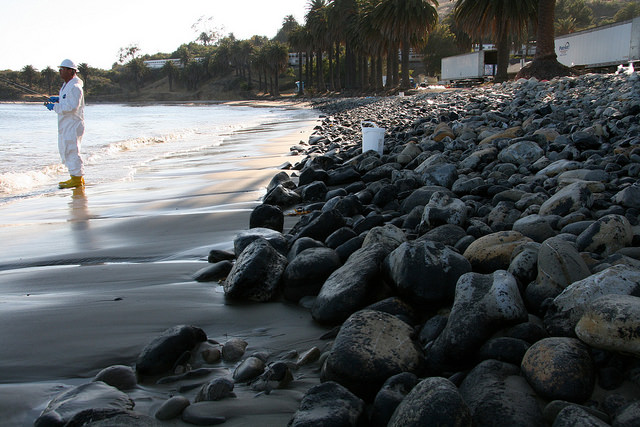Anais Tournier
Staff Writer
Situated near the Santa Ynez Mountains and the Santa Barbara Channel, UCSB is located in one of the most beautiful regions of California. Given the university’s proximity to nature, it is no surprise that UCSB has a reputable Environmental Studies Program and was home to the first Earth Day.
Less commonly known is that the genesis of UCSB’s commitment to maintaining a healthy planet was the result of an oil spill that happened just 5.8 miles away from Santa Barbara’s coast.
On January 28, 1969, Union Oil Platform A, an oil rig in the Santa Barbara Channel, experienced a pipe failure. As a result, three million gallons of crude oil were released into the ocean, engulfing 35 miles of beach property from Goleta to Ventura.
The aftermath of this oil spill devastated the Santa Barbara region. Boats and beachfront property were destroyed by oil. The spill killed 3,700 birds, as well as many other marine animals.
The Santa Barbara community responded to this devastation with civic activism and organized protests. At the forefront of these efforts was J. Marc McGinnes, a corporate lawyer at the time, who was asked by Congressman McCloskey to help Santa Barbara during the oil skill, launching McGinnes’s environmental career. With the help of other environmentalists (including Paul Ehrlich, Garrett Hardin, and Rod Nash), McGinnes hosted the first Environmental Rights Day exactly one year after the oil spill.
Environmental Rights Day was the beginning of a new environmental movement. After Santa Barbara hosted the first Environmental Rights Day, where The Declaration of Environmental Rights was read for the first time, hundreds of other cities were inspired to celebrate Earth Day for the first time.
However, McGinnes states that the environmental movement would not have gained so much momentum in Santa Barbara if not for an existing spirit of activism in the community. The Vietnam War had previously sparked protests at UCSB in the 1970s, fueling a desire to fight for change that strongly influenced the popularity of environmentalism.
“Students wanted to live differently than their parents. They were looking for different ways of thinking. So the environmental movement was exactly the kind of change that the students were looking for,” said McGinnes in an interview with The Bottom Line. With student support, the movement expanded exponentially.
The environmental movement was different from other movements because it was not politically or economically motivated.
“Spiritualism was at the core of the movement,” said McGinnes, who first became interested in the environment when he looked at the first image taken of the Earth from space. Many others felt the same type of awe for nature, which spurred the environmental movement onward.
Fifty years after UCSB defined itself as a campus characterized by environmental advocacy, students and faculty continue to find new ways to help the environment.
For instance, McGinnes founded both the Community Environmental Council and Environmental Defense Center to protect nature and educate the public about ecology. McGinnes also partnered with Roderick Nash to create the first Environmental Studies program in the nation at UCSB. McGinnes attributes the success of the Environmental Studies program to amazing lecturers and students’ continual desire to fix environmental issues.
UCSB’s Environmental Studies program now has 7,000 alumni including the President of SunPower and Vice President of Sustainability at Quicksilver. Environmental advocacy has also grown outside of the Environmental Science program, with over 40 environment-related clubs currently active on campus.
The Environmental Affairs Board (EAB), one of UCSB’s most prominent environmental organizations, has been addressing local and national environmental issues since 1992. Recently, the club has focused on three specific issues: zero waste, renewable energy, and sustainability. To support a zero waste mentality, EAB has quarterly pop-up thrift shops, which educates students about the environmental benefits of shopping at secondhand stores.
EAB has also pushed a renewable energy campaign. EAB plans to replace all of the lightbulbs in the bookstore with LED light bulbs, which will be funded by a grant from the Green Initiative Fund. Through these projects, EAB has continued building the university’s environmental legacy.
Over 40 years after the first Environmental Rights Day, the spirit of environmentalism still deeply influences Santa Barbara and the rest of the world. Earth Day is celebrated in over 160 countries and cultivates environment-based thinking in people of all ages and socioeconomic backgrounds.
At a time when climate change and other human-caused environmental problems threaten the environment and the foundations of our society, the desire to innovate and collaborate in the face of these problems is more important than ever—for Santa Barbara and beyond.
CORRECTION: In a previous edition of the article, UCSB’s environmental studies program was said to have 5,000 alumni, rather than 7,000.











